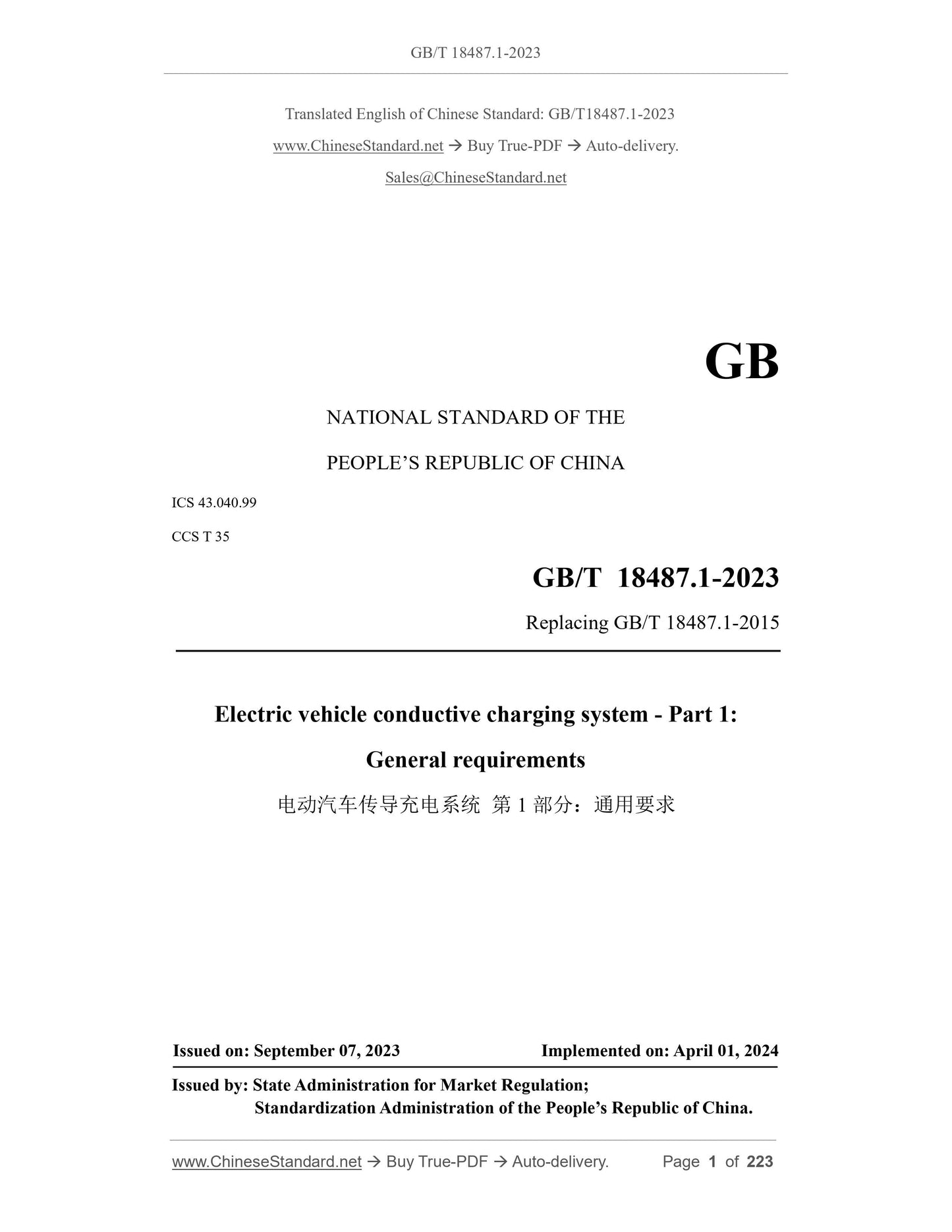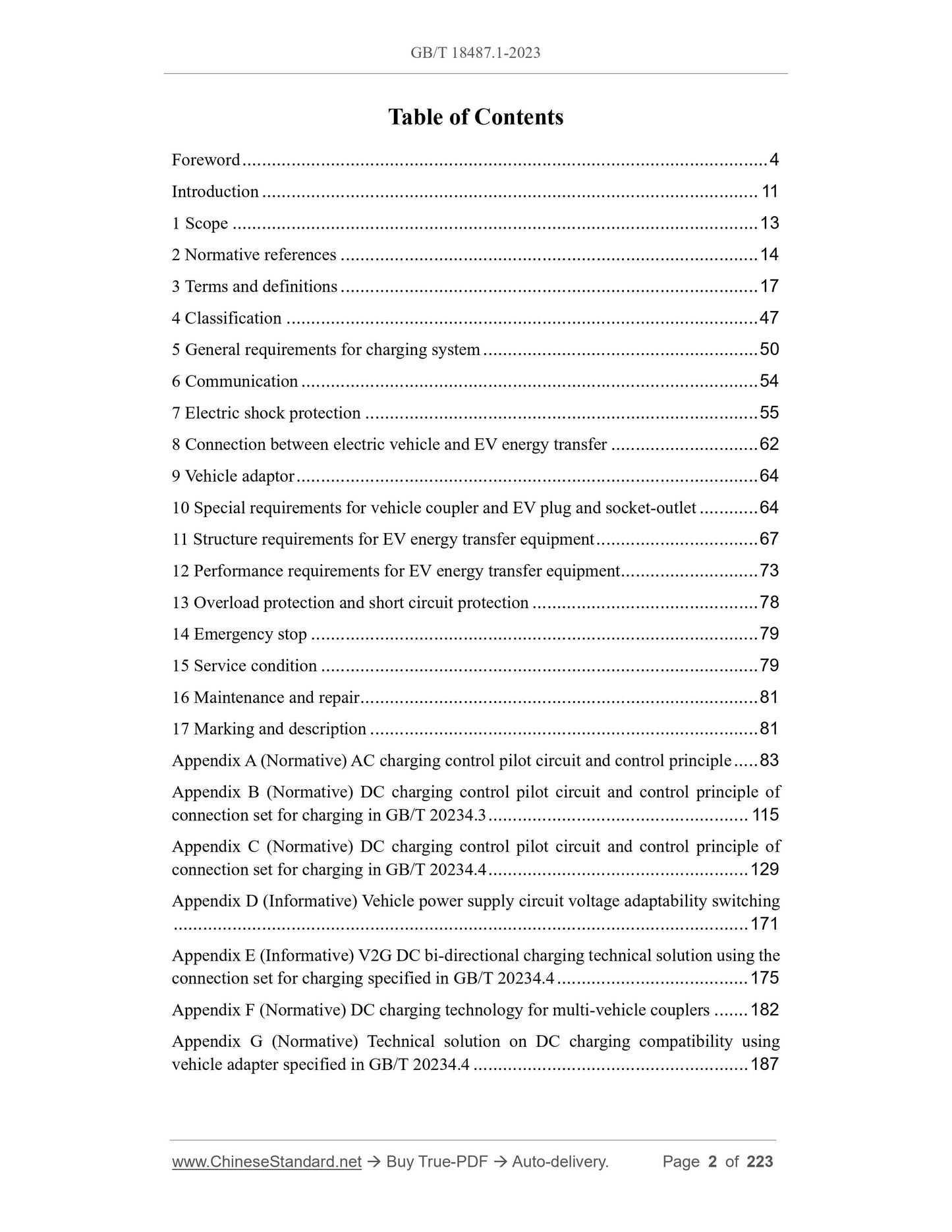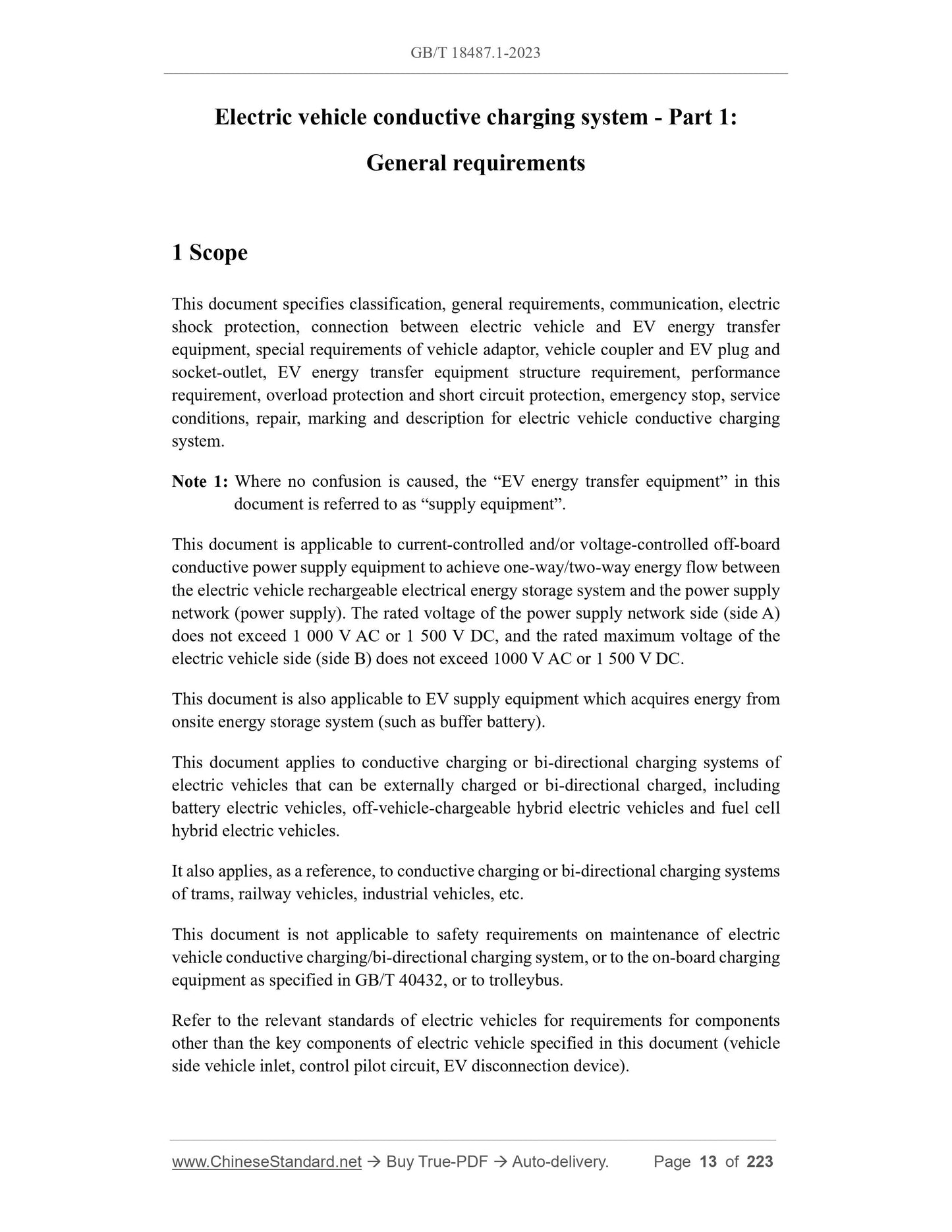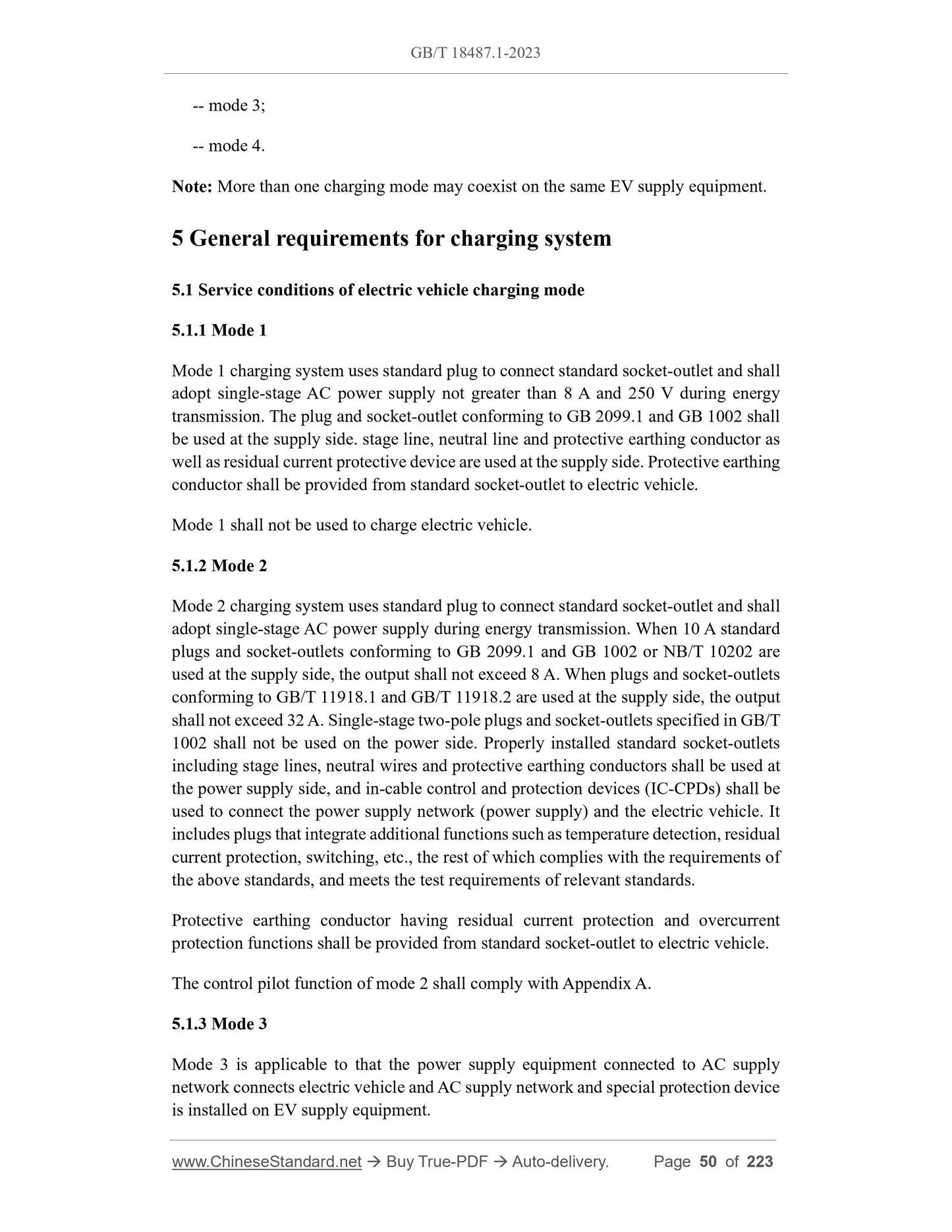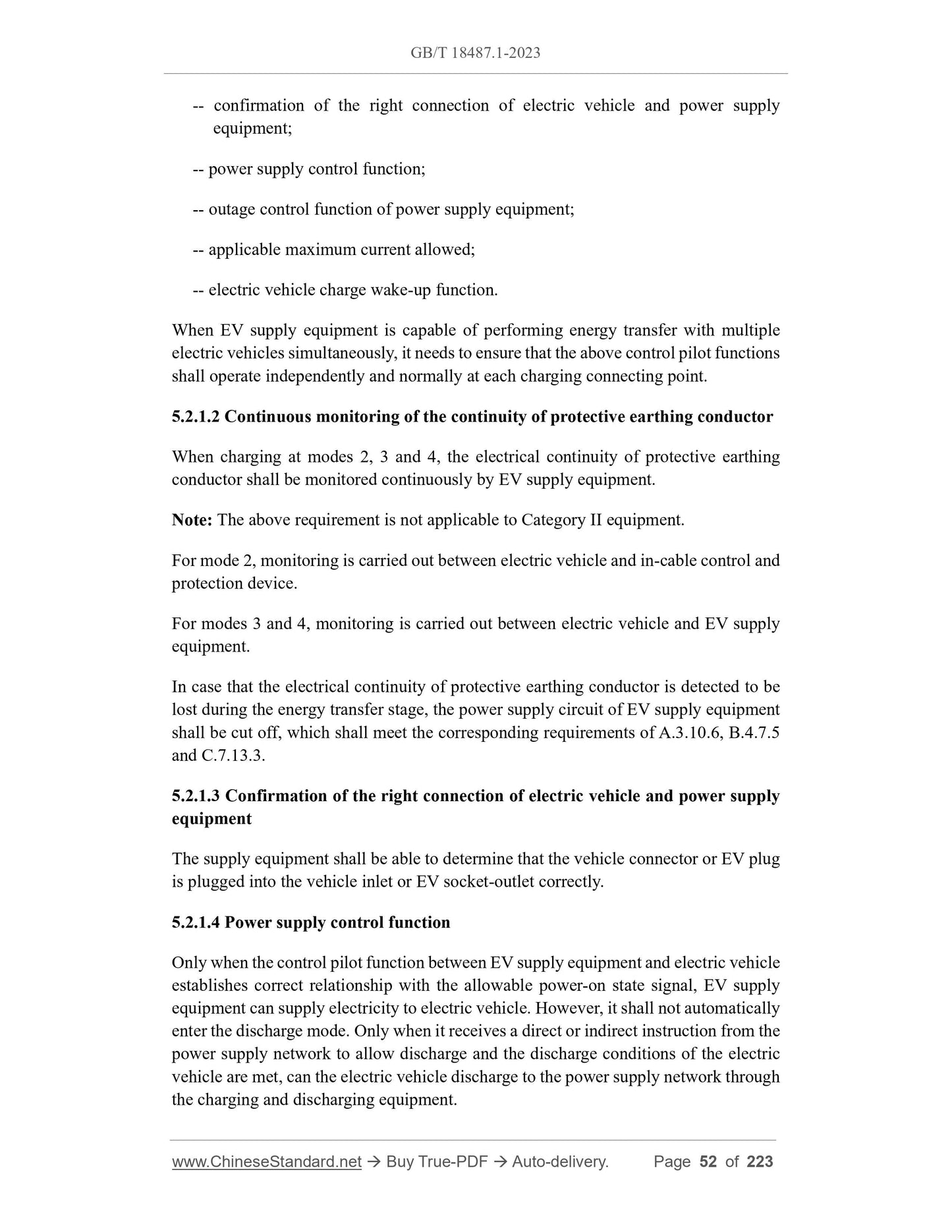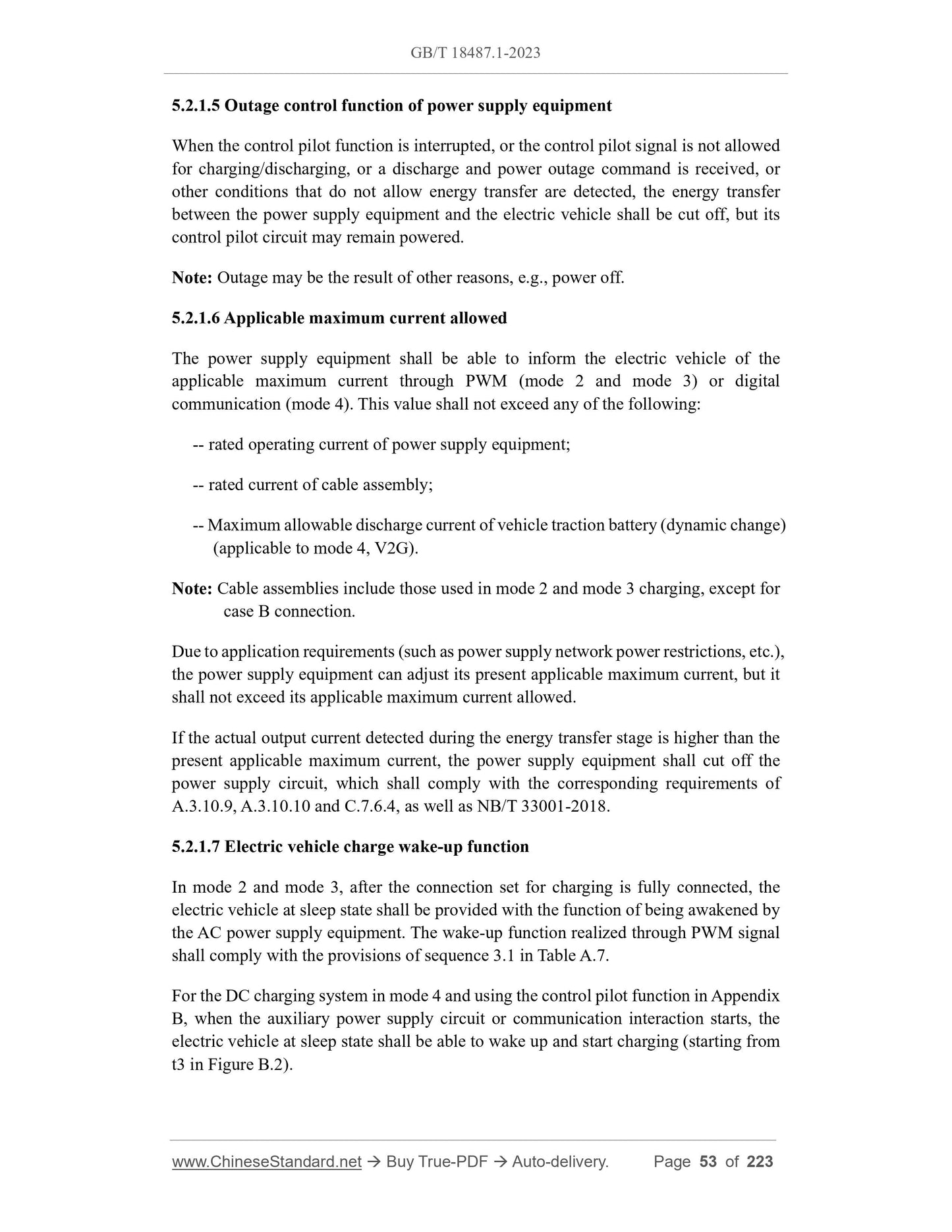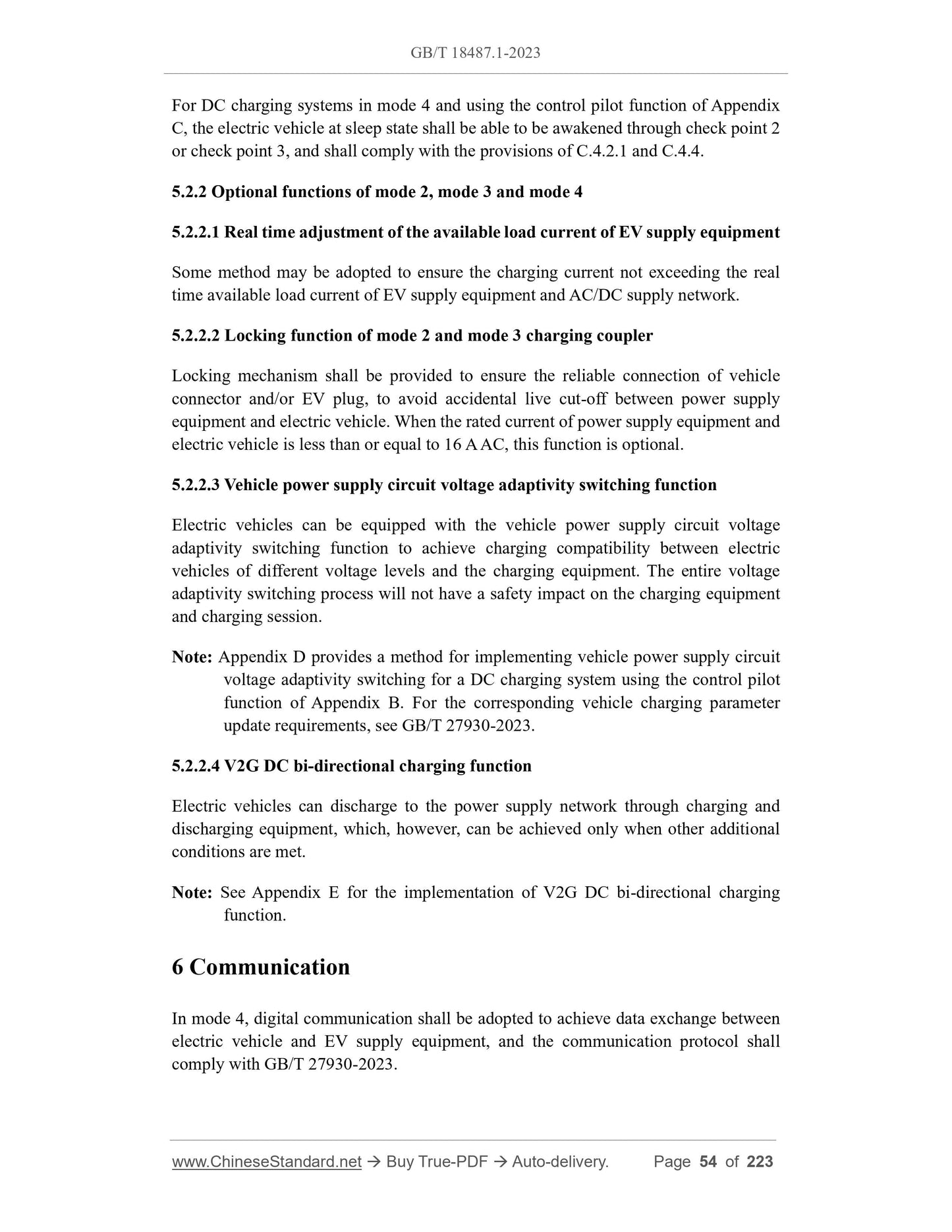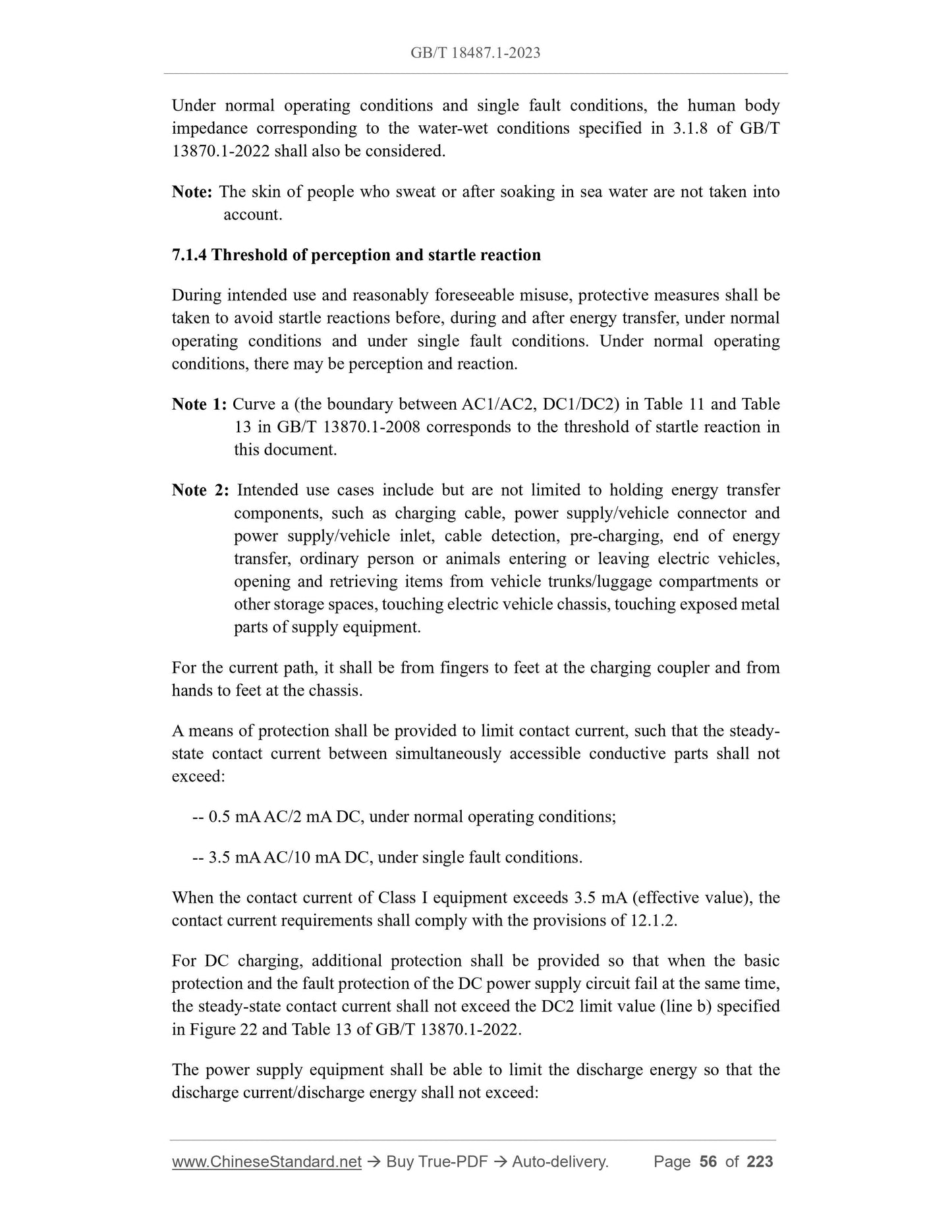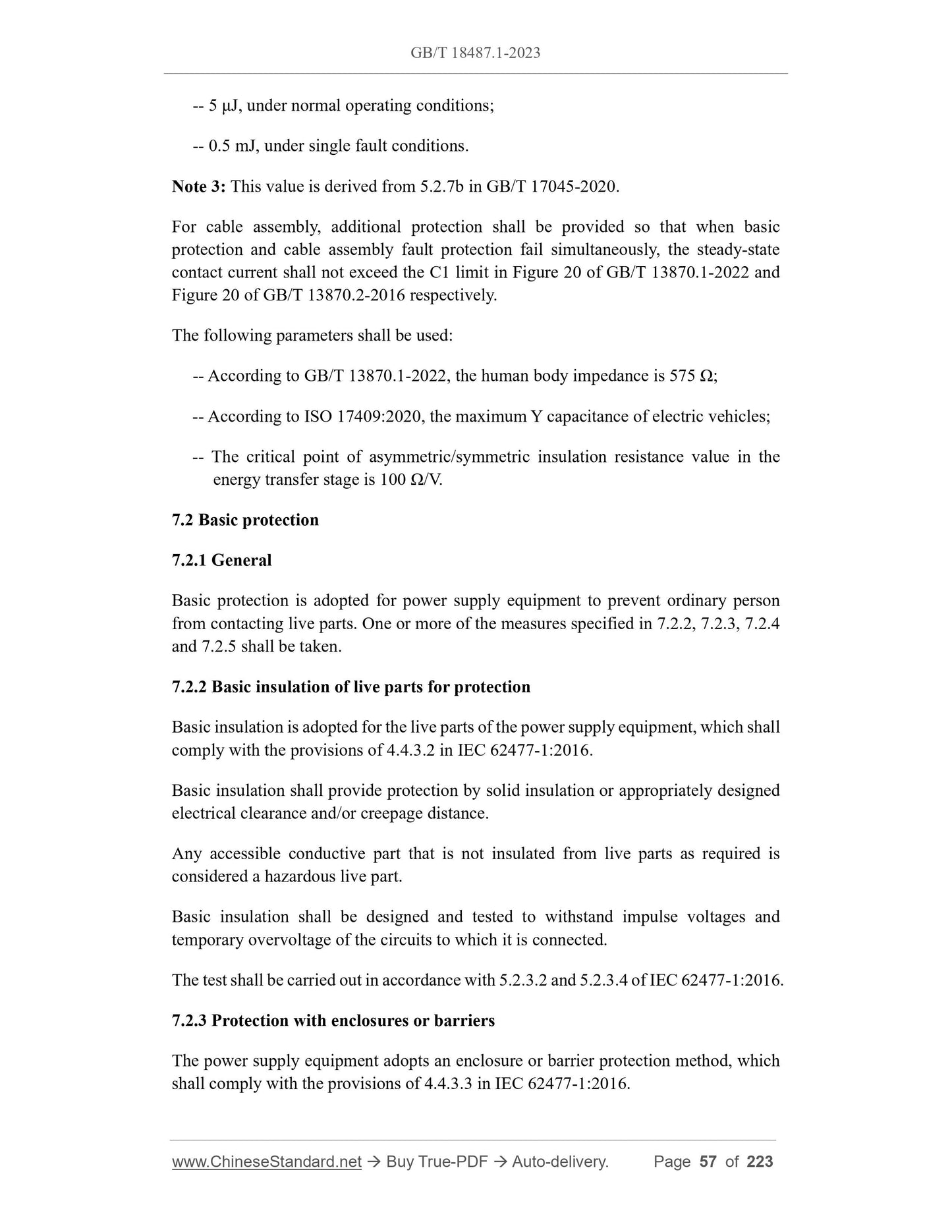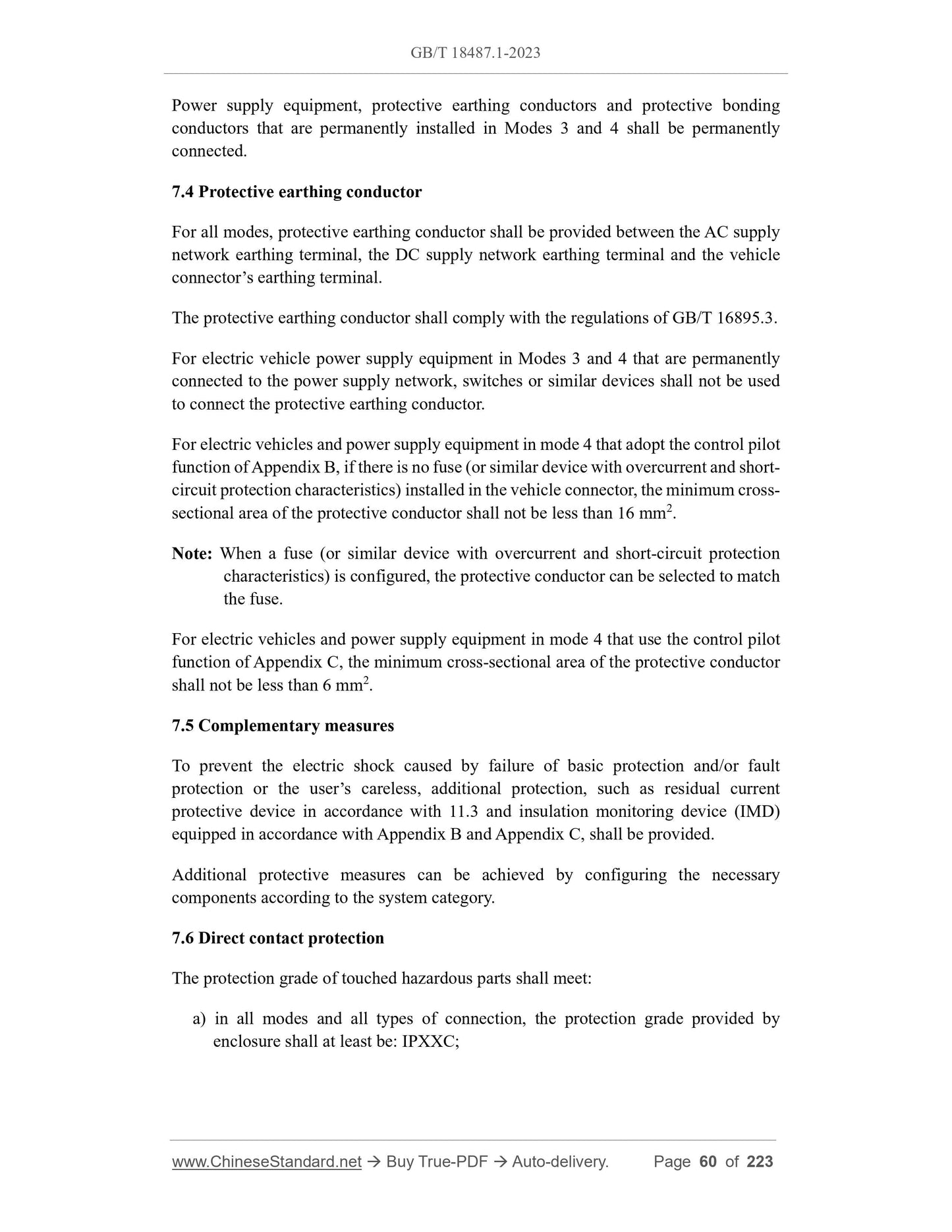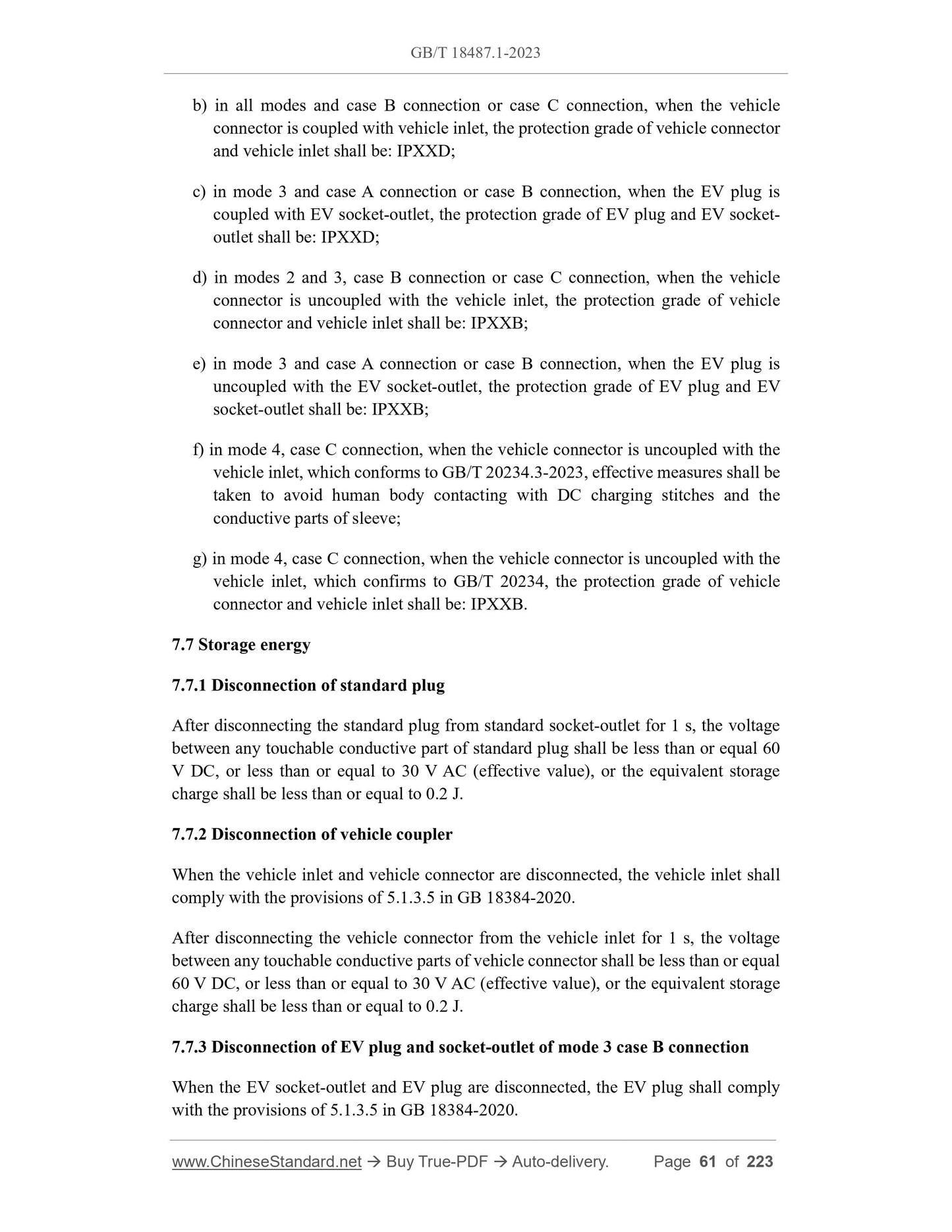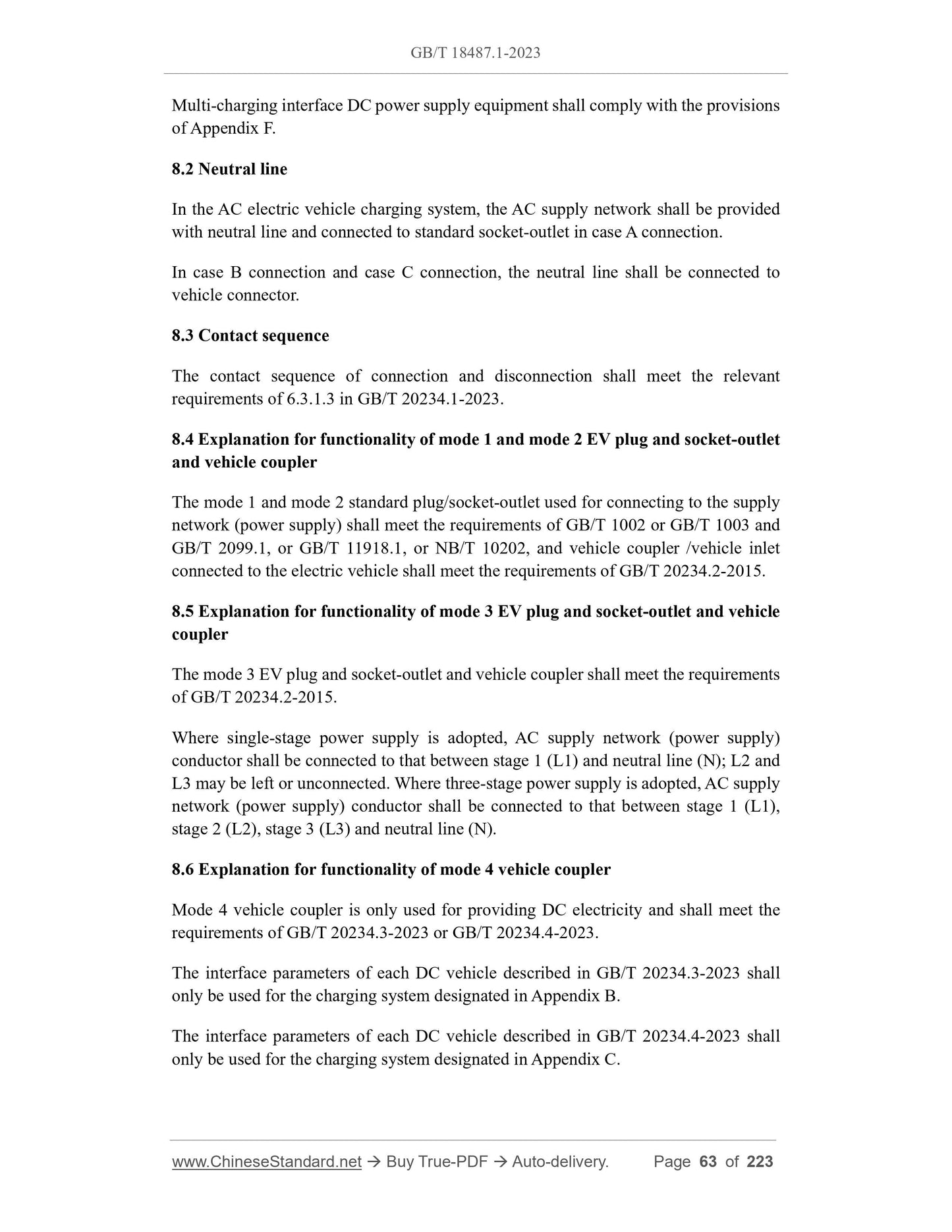1
/
of
12
www.ChineseStandard.us -- Field Test Asia Pte. Ltd.
GB/T 18487.1-2023 English PDF (GB/T18487.1-2023)
GB/T 18487.1-2023 English PDF (GB/T18487.1-2023)
Regular price
$2,005.00
Regular price
Sale price
$2,005.00
Unit price
/
per
Shipping calculated at checkout.
Couldn't load pickup availability
GB/T 18487.1-2023: Electric vehicle conductive charging system - Part 1: General requirements
Delivery: 9 seconds. Download (and Email) true-PDF + Invoice.Get Quotation: Click GB/T 18487.1-2023 (Self-service in 1-minute)
Newer / historical versions: GB/T 18487.1-2023
Preview True-PDF
Scope
This document specifies classification, general requirements, communication, electricshock protection, connection between electric vehicle and EV energy transfer
equipment, special requirements of vehicle adaptor, vehicle coupler and EV plug and
socket-outlet, EV energy transfer equipment structure requirement, performance
requirement, overload protection and short circuit protection, emergency stop, service
conditions, repair, marking and description for electric vehicle conductive charging
system.
Basic Data
| Standard ID | GB/T 18487.1-2023 (GB/T18487.1-2023) |
| Description (Translated English) | Electric vehicle conductive charging system - Part 1: General requirements |
| Sector / Industry | National Standard (Recommended) |
| Classification of Chinese Standard | T35 |
| Classification of International Standard | 43.040.99 |
| Word Count Estimation | 158,185 |
| Date of Issue | 2023-09-07 |
| Date of Implementation | 2024-04-01 |
| Older Standard (superseded by this standard) | GB/T 18487.1-2015 |
| Issuing agency(ies) | State Administration for Market Regulation, China National Standardization Administration |
Share
